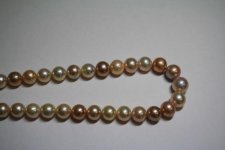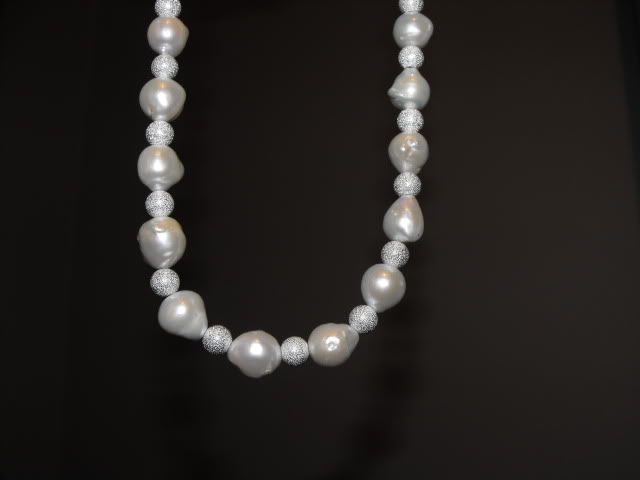Honestly, I wasn't shown any round nucleated pearls with nice lustre on this last trip. Plenty of okay ones, but the perfect pearls that one producer had rushed to show me last time weren't visible this time.
Judi, the pearls are still being produced in the same mollusk,
hyropsis cumungi. The issue is which mollusks are the Chinese using for the nucleus itself - the freshwater US mollusk nuclei (the nuclei are made from shell) are thought to be too expensive for these growers. The shell that they have readily available is considererd to be too small to craft bead nuclei larger than 7mm - so the question is, what species is used?
There doesn't seems to be proof one way or the other that the endangered species mentioned by Caitlin is being utilized - the point is we just don't know if it is. It is a possibility, and one with ethical considerations, obviously. I personally am hoping that the Chinese growers have found some type of compound material, as Caitlin mentioned. This would enable them to have an increased nuclei size, and therefore a larger pearl.
The higher cost of nucleated pearls reflects the cost of the nucleus, the fact that there is only one pearl per mollusk, the increased length of time required to grow the pearl, the increased intensity of the farming and the low probability of a 'good' pearl being produced. They are getting less expensive, and just like other CFWP, there is simply TONS of junk being produced. Getting the good stuff, like always, is the trick!
The Chinese would love to challenge the SS pearl industry, and without nucleation, that simply isn't possible. Hope this explains some of the questions that have popped up in this useful thread. Here is a photo of some great nucleated FW.

These are simply gorgeous. I just wish that they were all like this...






